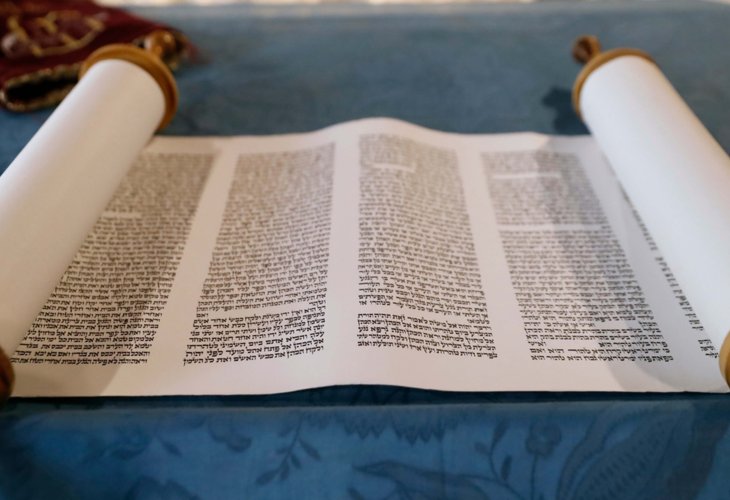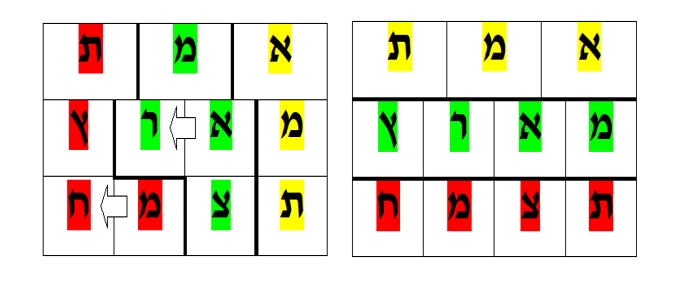Discovering the Truth: How Do We Know the Torah Guides Us Today?
Unique insights from within the Torah itself demonstrate its truth and authenticity, dispelling any falsehoods.
- הרב איתן זינר
- פורסם כ"ה אייר התשפ"ב
 (Photo: shutterstock)
(Photo: shutterstock) #VALUE!
![]()
![]()
![]()
It's a well-known and widely accepted fact that the "Torah" is named as such because it implies "teaching or guidance." It serves to instruct us on how to live our lives and how to fulfill the 613 commandments. Interestingly, the Giver of the Torah, blessed be He, did not just rely on the faithful testimony of our ancestors, the recipients of the Torah, who said "The Torah is truth"—a truth given in broad daylight, witnessed by an entire nation through miraculous events on a global stage. In that era, not a single person in the world could deny this fact, even though the event placed the Jewish people in a clear spiritual and status advantage over other nations—whereas if possible, it might have been contested.
Indeed, there is no historical or archaeological evidence of any attempt to deny this. If the people of that generation understood the unmistakable reality of this historical fact, how could it possibly be challenged many generations later by imagination alone? More so, the Creator, blessed be He, also embedded a "seal of truth" within the Torah in various ways, so as to eternalize its authenticity—a seal that cannot be disputed (as mentioned in the previous article).
Right from the first verse in the Torah, "In the beginning, Hashem created the heavens and the earth," we find the first hint: the last letters of the first three words form the word "truth"—though only at the end and in a mixed order. This hints that true "truth" might only be fully revealed at the end, allowing for free choice at the beginning.
We find another hint within the essence and key parts of the Torah:
The essence of the Written Torah is the "Ten Commandments" [or ten core commandments given to "the Jewish people," heard during the "Mount Sinai" revelation, and inscribed on the "Tablets of the Covenant"]. They start with (Exodus 20:2): "I am Hashem, your God", beginning with the letter A (Alef).
The essence of the Oral Torah is the "Mishna". It begins (Tractate "Berachot" 1:1) with: "From when do we recite the 'Shema' in the evenings?", starting with the letter M (Mem).
The essence of the legal explanation and the practical commandments in the Mishna is the "Gemara". The "Gemara" begins in Tractate "Berachot" right after the Mishna with the words: "Tanna, where is it placed?" indicating the letter T (Tav).
Thus, the initial letters of these three sections, which summarize the essence of our sacred Torah, form the word: "truth".
Furthermore, the Oral Torah endeavors to teach about the power of "truth" and the weakness of "falsehood"! In the Babylonian Talmud, Tractate "Shabbat" (104a), it states: "Shin" signifies "Falsehood"; Tav signifies "Truth"! The "Gemara" asks why the letters forming "falsehood" are close to each other in the alphabet, while the letters of "truth" are distant? The "Gemara" answers: "Falsehood" is common, while "Truth" is rare. The Gemara further questions why "falsehood" stands on one foot and "truth" has stones? [Rashi explains that each letter of "falsehood" stands on a pointed base; and the Maharasha adds that even as a full word, "falsehood" stands on one uneven foot, the letter "Kuf".]
Now, the format of the "Gemara" question is worth delving into since it seems implicit. It should have stated, "Falsehood" has feet, and "Truth" doesn't; why then mention "stones"? [Meaning: each letter has a base like a "stone"]. The answer here portrays that "Truth" is everlasting [its letters show that indeed each has two feet and a stabilizing base]; whereas "falsehood" stands but temporarily [it stands on a single unstable foot], leading the sages to say: "Falsehood has no feet!"
Regarding the first question, the Jerusalem Talmud offers another explanation: Hashem's seal is "Truth" [extending from the start of the "Aleph-Bet" to the end: beginning with "Aleph"; middle with "Mem"; and end with "Tav". Hashem declares:] "I am the First, with no one before me; and beside me, no God exists, there is no partner; and with the end, I remain unwilling to pass on [for I am eternal, with none to succeed me!]. As the prophet says (Isaiah 44:6): "[Thus says Hashem, king of Israel and redeemer, Hashem of hosts, I am the First and the Last, and besides Me, there is no God.]"
Apparently, the answer of the Jerusalem Talmud to the first question, noting "Truth" occupies the beginning, middle, and end of the "Aleph-Bet", leaves room for querying: Certainly, it encompasses beginning and end, but in examining, it's evident that "Mem" is not the middle letter of the "Aleph-Bet"; and if "Truth" claims perfection, here lies a fault?! The "Aleph-Bet" has 22 letters—no true midpoint. Moreover, "Mem" isn't one of the two middle letters.

Truly, there's one reply for both issues, proving the "Truth stands forever", complete, solid, and unwavering! However, the premise of the inquiry is flawed. Explaining thus: the "Aleph-Bet" also includes five final letters [םןץף"ך]; adding them, the count becomes 27, an odd number, revealing a middle letter—surprisingly, it's the "Mem" [open, not final]—"wonder of wonders".

Again, we witness "Truth stands forever", "Truth sprouts from the earth", and in addition, the "Truth" is steady, logically ordered: it begins [expressed by A – first]; it has a middle [_strongM_ – central]; and an end [_strongT_ – last]. Accordingly, "Tav" denotes "Purpose" [i.e., ultimate goal], the "Truth" destination! In contrast, "falsehood", devoid of "Tav"—never reaches "Purpose". The word "Purpose" closes with "Tav", since only "Truth" brings man to true "Purpose"! Therefore, in Hebrew, "Purpose" begins and ends with "Tav", its entirety equal, indicating: "End action – conceived at the start!" End mirrors the beginning! Hence, "Purpose" must start and also conclude with "Tav". Initially, the aim is potential, but finally transitions into reality. Herein lies the marvel of Hebrew, a divine language embodied in the very structure of "Purpose", elucidating that the driving force to the final goal, realizing potential to outcome [from initial thought, shown by beginning "Tav", to ultimate purpose, reflected by ending "Tav"], is a "vessel" at its core. Wonder of wonders!
Lastly, an additional revelation of the boundless divine wisdom manifesting in the writing of scripture verses, testifying "Our Torah is a Torah of Truth", its uniqueness as an "Absolute Truth"—unyielding, eternally sprouting, stabilizing, and blooming, demonstrated in a linguistic structure vividly conveying this concept, as in the psalm (Psalms 85:12): "Truth shall sprout from the earth", arranged in a crossword-like format, visible to our eyes in a thrilling structure allowing dual reading—horizontal and vertical of identical words [retaining content meaning].


